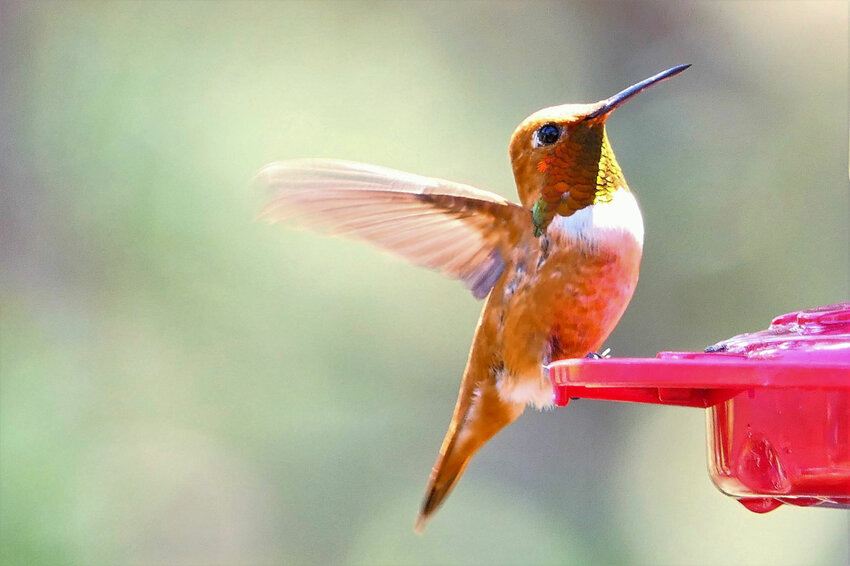
Photo courtesy Charles Martinez
This week’s Bird of the Week, compliments of the Weminuche Audubon Society and Audubon Rockies, is the rufous hummingbird.
Perhaps no other bird species inspires such fear and anticipation of arrival as the 3-inch-long, hot-tempered rufous hummingbird. Whether defending a robust patch of scarlet gilia, firecracker penstemon or a nectar feeder, these birds are known for their bullying antics, pushing their bigger cousins such as the broad-tailed and black-chinned hummingbirds off desirable food sources.
After leaving the wintering grounds in Mexico in late winter, spending months traveling north up through the lowlands along the Pacific Coast, this energetic anomaly seeks out nesting grounds in the northwestern states, British Columbia and points as far north as Alaska. Once congregated on the breeding grounds, males perform elaborate J-shaped dives to wow mates, producing an array of noise that catches the attention of prospect females. Most notable is an audible “chu-chu-chu” at the bottom end of their dives, created as air rapidly vibrates their outermost wing feathers. Like broad-tailed hummers, these birds also produce a detectable buzz in flight via a notch on the second innermost tail feather.
Nests are 2 inches across and densely constructed of plant down, bark, lichen and tacked together with spider webs, ranging from 3-30 feet off the ground in conifer stands and dense shrubbery. Once fledged after two to three weeks of development in the nest, young birds turn inland with their parents and follow the nectar wave of flowering plants southeast through mountain meadows and lower elevations along foothills of the Rocky Mountains. Once they arrive in our backyards, they have effectively traveled the better portion of a 2,000-mile loop. Talk about some hard-earned miles. How they still manage to conjure the energy to run off birds in defense of food “stake outs” is hard to believe. Come early fall, these birds will continue their long journey back south for winter.
Males are very distinct, as they are the only regional hummingbird species with characteristic red-orange plumage and a flaming-red gorget, the bearded, scaled feather tracts found on the chin. Female and immature birds have rufous flanks, a white breast and green tones intermixed along their backs and wings. Hybridization predominantly occurs with the Allen’s species, found along coastal habitats. When perched with wings collapsed, tail feathers extend furthermost to a point. Interestingly, in addition to being slightly smaller-bodied than females, males have shorter wings that correlate energetically with their metabolic needs, defending dense patches of wildflowers, as they push longer-winged females further afar to find more sparsely populated food sources. In addition to nectar sourced from tubular flowers, this species eats small insects such as gnats and aphids.
With an estimated 2 percent annual decline in population over the last 50 plus years, this species has a “Near-Threatened” conservation status. The biggest thing you can do to promote a healthier future for this bird is to plant native plants, effectively rebuilding habitat corridors along its long journey.
For more information on activities, visit www.weminucheaudubon.org and www.facebook.com/weminucheaudubon/.